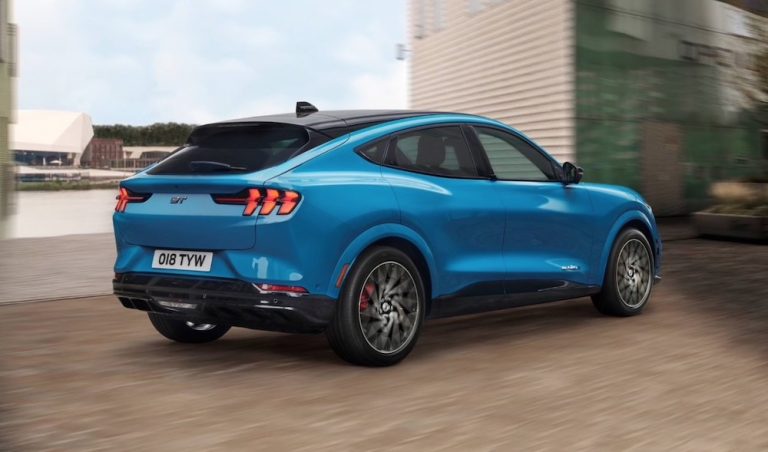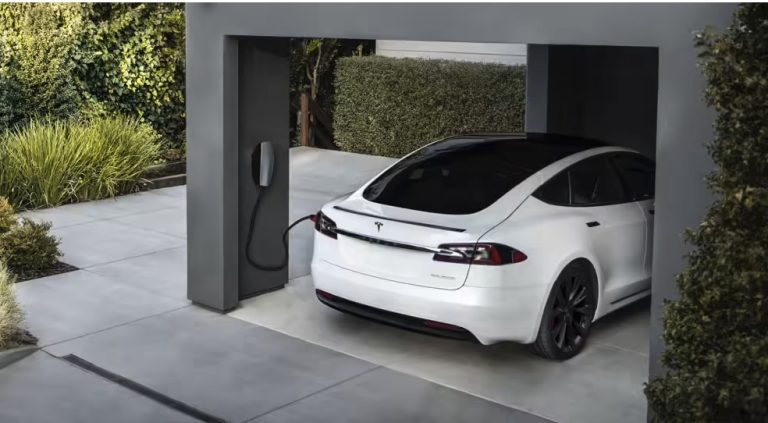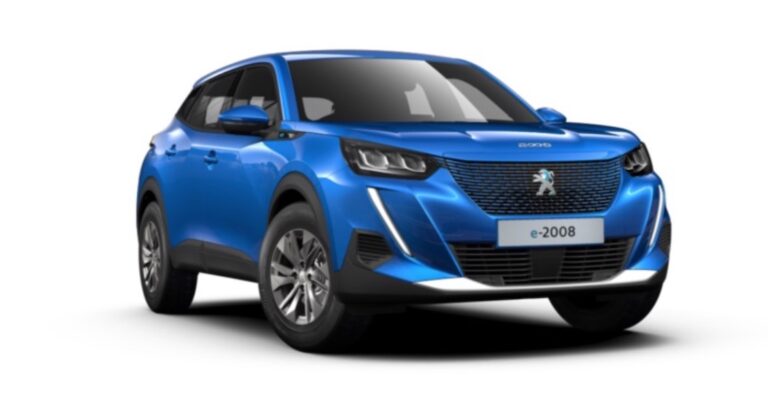Electric Cars: The Basics
For those of you new to zero-emission electric driving, we recommend a read of the following articles:
Sign up to the e-zoomed Electric Living newsletter
The Hyundai IONIQ PHEV Hatchback
The Hyundai Motor Company, usually referred to simply as Hyundai, is a leading South Korean automotive manufacturer headquartered in Seoul. The company was founded in 1967, with its first model, the Cortina (in collaboration with Ford Motor Company), launched in 1968. The Cortina was assembled in the Ulsan plant in South Korea. Hyundai has come a long way since then, and currently owns a 33.88% stake in Kia Corporation, and also wholly owns the luxury automotive brand, Genesis, among others.
Hyundai has an annual production capacity of over 1.6 million units, making the automotive manufacturer the third-largest in terms of production behind the Japanese automotive manufacturer, Toyota and the German automotive group, Volkswagen. Hyundai has production facilities across a number of global locations. Some of these include: North America, India, Russia, Turkey, China and the Czech republic. Hyundai vehicles are sold in nearly 200 countries globally. The company currently has the following battery-electric vehicles (BEVs) and plug-in hybrid electric vehicles (PHEVs):
- All-electric Hyundai IONIQ
- All-electric Hyundai Kona
- All-electric Hyundai IONIQ 5
- All-electric Hyundai IONIQ 6
- All-electric Hyundai Inster
- Hyundai IONIQ Plug-In Hybrid
- Hyundai Santa Fe Plug-In Hybrid
- Hyundai Tucson Plug-In Hybrid
The Hyundai IONIQ, is the first model to be offered as a hybrid (HEV), a plug-in hybrid (PHEV) and a battery-electric vehicle (BEV). All three powertrains are offered within one body type. The variants made their debut at the Geneva Motor Show in 2016. However, the IONIQ Hybrid made its debut in South Korea in January 2016.
Though the Hyundai IONIQ plug-in hybrid electric vehicle (PHEV) ends production in 2022, it will still be available for those keen on buying a used electric car. The Hyundai PHEV has much to offer those seeking a lower price entry into electric driving. The electric vehicle (EV) is a relatively affordable family electric car, compared to other PHEVs on the market.
In terms of practicality, the IONIQ PHEV comfortably seats five adults (front and rear) and offers decent boot space (341 L). The interior quality is in line with the affordable price tag. Having said that, the standard level of specifications and technology is good.
The EV is easy to drive, though the performance will not set the heart racing, it is certainly adequate for its segment and price point. The front-wheel drive IONIQ PHEV can achieve 0-100 km/h in 10.6 seconds, and also benefits from instant torque. The hybrid drivetrain delivers a maximum power of 105 PS (torque 147 Nm).
Given the WLTP certified emission-free range is 50 km, and most commutes are short, there is much scope for taking advantage of electric driving to save money. The PHEV has a 8.9 kWh onboard EV battery, which is reasonably standard for a PHEV of this generation. However, expect the real-world electric range to be closer to 45 km.
The EV range is impacted by a number of factors, to include, driving profile, speed, load, regenerative braking, road condition, weather and a lot more. In any case, driving on e-mode can be as low as 5 cents per mile, far cheaper than using petrol or diesel!
Taking advantage of the EV range will also require inculcating a habit of charging the EV on a regular basis, which again is as easy as charging a smart phone. We at e-zoomed recommend the use of a dedicated EV charging station, like easee to charge the EV. We do not encourage the use of a domestic 3-PIN plug. Charging the EV using a single-phase EV charger will take up to two hours. Of course, if you top-up on a regular basis, the charging time will be faster.
The IONIQ plug-in hybrid pairs a 1.6-litre petrol engine with an electric motor, powered by an onboard EV battery. The automotive manufacturer claims a fuel economy up to 1.1 l/100 km for the electric vehicle (EV). Of course the real-world fuel economy will depend on a number of factors, but none as influential as using the e-mode. Bottom-line, to increase the fuel economy of the vehicle and lower the driving costs, the PHEV should be driven as much as possible on the electric mode.
In terms of reliability, Hyundai has a good reputation and moreover offers a 8 years or 160,000 km for the EV battery. The EV has been awarded a Five-Star NCAP Safety Rating. We at e-zoomed would encourage those seeking to buy a used electric car to take appropriate steps for the inspection of the EV and in particular, the onboard EV battery.
Bottom-line, electric driving is good for the environment and the wallet!
| PROS | CONS |
|---|---|
| An affordable family electric hatchback | On board charger limited to 3.3 kW |
| Spacious interiors | Smaller electric range compared to other alternatives |
| Easy to drive | Not the most exciting exterior design or drive |
The Hyundai IONIQ PHEV Hatchback (credit: Hyundai)
| At A Glance | |
|---|---|
| EV Type: | Plug-In Hybrid Electric Vehicle (PHEV) |
| Vehicle Type: | Hatchback |
| Engine: | Petrol/ Electric |
| Available In Ireland: | No |
| Variants (1 Option) |
|---|
| Hyundai IONIQ Plug- In Hybrid (€ N/A) |
| EV Battery & Emissions | |
|---|---|
| EV Battery Type: | Lithium-ion |
| EV Battery Capacity: | Available in one battery size: 8.9 kWh |
| Charging: | DC charging not available. On-board charger: 3.3 kW AC |
| Charge Port: | Type 2 |
| EV Cable Type: | Type 2 |
| Tailpipe Emissions: | 26 g (CO2/km) |
| Battery Warranty: | 8 years or 160,000 km |
| Average Cost Of Residential Charging | |
|---|---|
| Battery net capacity : 8.8 kWh | € 2.10 |
| Battery net capacity : 11.6 kWh | € 2.78 |
| Battery net capacity : 12.0 kWh | € 2.87 |
| Battery net capacity : 13.10 kWh | € 3.14 |
| Battery net capacity : 14.10 kWh | € 3.37 |
- Note 1: The average cost of residential electricity in Ireland varies depending on the region, supplier and type of energy used. An average for Ireland is 23.97 cents/kWh.
- Note 2: Not all EV manufactures make available the data on net EV battery capacity, and in a number of instances the EV battery capacity advertised, does not state if it is gross or net capacity. In general, usable EV battery capacity is between 85% to 95% of the gross available capacity.
| Charging Times (Overview) | |
|---|---|
| Slow charging AC (3 kW – 3.6 kW): | 6 – 12 hours (dependent on size of EV battery & SOC) |
| Fast charging AC (7 kW – 22 kW): | 3 – 8 hours (dependent on size of EV battery & SoC) |
| Rapid charging AC (43 kW): | 0-80%: 20 mins to 60 mins (dependent on size of EV battery & SoC) |
- Note 1: SoC: state of charge
| Dimensions | |
|---|---|
| Height (mm): | 1450 |
| Width (mm): | 1820 |
| Length (mm): | 4470 |
| Wheelbase (mm): | 2700 |
| Turning Circle (m): | 10.6 |
| Boot Space (L): | 341 |
| Plug-in hybrid | |
|---|---|
| EV Battery Capacity: | 8.9 kWh |
| Pure Electric Range (WLTP): | 50 km |
| Electric Energy Consumption (kWh/100km): | N/A |
| Fuel Consumption (l/100 km): | 1.1 |
| Charging: | DC charging not available. On board charger: 3.3 kW AC |
| Top Speed: | N/A |
| 0-100 km/h: | 10.6 seconds |
| Drive: | Front-wheel drive (FWD) |
| Electric Motor (kW): | N/A |
| Max Power (PS): | 105 |
| Torque (Nm): | 147 |
| Transmission: | Automatic |
| Seats: | 5 |
| Doors: | 5 |
| Kerb Weight (kg): | 1,495 – 1,551 |
| Colours: | 9 |
| NCAP Safety Rating: | Five-Star |
Ireland: EV Market Overview
As is the case in a number of global markets, to include the European Union and the United Kingdom, the sale of electric cars in Ireland is also fast gaining momentum. In fact, in January 2022, battery-electric vehicles (BEVs) and plug-in hybrid electric vehicles (PHEVs), accounted for 21% of all new cars licensed in Ireland. Put another way, more than a fifth of the cars bought in Ireland were either pure electric or a plug-in hybrid electric vehicles.
It is also worth nothing the continued decline in the sale of diesel vehicles in Ireland, as families and businesses migrate to lower tailpipe emission electric vehicles (EVs). Diesel market share has declined from 34.2% in early 2021 to 19.7% in early 2022. We can expect this trend to continue for the forseeable future.
The government has set a target of 936,000 electric vehicles by 2030, with 845,000 to be private passenger cars. This will be approximately a third of the vehicles on roads in Ireland (currently there are 2.8 million vehicles on the road). Like many other governments, Ireland is committed to ending the sale of internal combustion engine (ICE) cars by 2030.
The government is committed to the rapid adoption of electric cars in the country. The Department of Transport has committed €100 million for EV subsidies in 2022 (almost double the commitment in 2021). The grant for private electric vehicles is up to €5,000 on qualifying battery-electric vehicles (BEVs). Plug-in hybrid electric vehicles (PHEVs), do not qualify for the electric vehicle grant.
Ireland: Top Electric Cars
| Top Electric Cars | Type Of EV |
|---|---|
| Tesla Model 3 | Battery-electric vehicle (BEV) |
| Volkswagen ID.3 | Battery-electric vehicle (BEV) |
| Nissan Leaf | Battery-electric vehicle (BEV) |
| Renault Zoe | Battery-electric vehicle (BEV) |
| Volkswagen ID.4 | Battery-electric vehicle (BEV) |
| Hyundai IONIQ 5 | Battery-electric vehicle (BEV) |
| Kia e-Niro | Battery-electric vehicle (BEV) |
| Kia EV6 | Battery-electric vehicle (BEV) |
While e-zoomed uses reasonable efforts to provide accurate and up-to-date information, some of the information provided is gathered from third parties and has not been independently verified by e-zoomed. While the information from the third party sources is believed to be reliable, no warranty, express or implied, is made by e-zoomed regarding the accuracy, adequacy, completeness, legality, reliability or usefulness of any information. This disclaimer applies to both isolated and aggregate uses of this information.






























